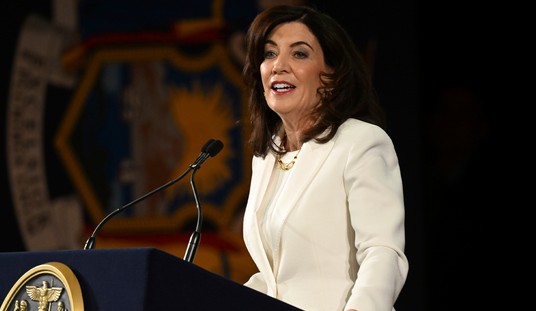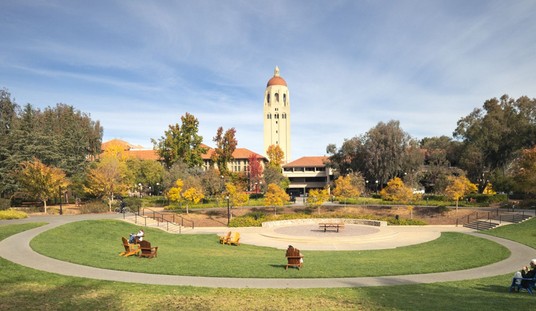The Trump administration quietly put into effect a new policy on asylum-seekers Thursday in coordination with Guatemala. The first asylum-seeker was deported back to Guatemala as a test run of sorts. The procedure seems to have been successful.
The Trump administration worked with the government of Guatemala for months to hammer out an agreement to slow the flow of migrants reaching the U.S. border from Central America. In July an agreement was reached after President Trump threatened to impose tariffs on Guatemalan goods, a tax on money Guatemalan immigrants in the U.S. send to family members back home and a travel ban for the entire country. The administration has not disclosed the full agreement but Guatemala officials describe it as a “safe third country” agreement.
Under the proposal, the U.S. would deport asylum seekers who traveled from other countries through Guatemala to reach the U.S.-Mexico border. They would be required to seek asylum in Guatemala instead. The accord exempts Guatemalans and unaccompanied children.
What this does is allow asylum-seekers to remain in Guatemala or to receive help in Guatemala to return to Honduras or another Central America country. At the time, Homeland Security Secretary Kevin McAleenan said the new agreement might take effect in August but it did not. The Guatemalan government pledged to process the asylum claims of those deported by the U.S. The government warned, though, that at the time it only had eight employees processing asylum claims. Last year 262 asylum petitions were processed.
Democrats resisted the new agreement at the time and insisted that anyone claiming asylum is allowed to stay in the U.S., which only exacerbates the problem at the border. The unsustainable migration to the U.S. border has overwhelmed all resources in the border states. Putting in place a solid agreement with other countries in Central America will send a message that asylum-seekers from Honduras or El Salvador, for example, can find shelter and support in Guatemala. The migrants are determined to be ineligible for asylum and then wait to be deported to Guatemala.
Enrique Antonio Degenhart Asturias, the interior minister, said Thursday marked the beginning of the “operative stage” of the accord with the U.S., telling reporters in the capital that his government is expecting more arrivals of Honduran and Salvadoran migrants deported by the U.S. next week. He said Guatemala will take steps to gradually increase the number of foreign asylum-seekers it will receive.
The agreement, one of three asylum deals the Trump administration has brokered with all countries in Central America’s Northern Triangle, has evoked withering criticism from immigrant advocates and humanitarian groups. They believe the U.S. will place vulnerable asylum-seekers in harm’s way by requiring them to seek refuge through the fledgling asylum system of a country which has seen the exodus of hundreds of thousands of its own citizens in the past months.
Look for the open borders crowd to continue to criticize the Trump administration’s efforts to quell the flow of illegal immigration. The United Nations refugee agency which receives funds from the United States criticized the new policy. It issued a statement: “It is an approach at variance with international law that could result in the transfer of highly vulnerable individuals to countries where they may face life-threatening dangers.” The Trump administration believes that this cooperation between Central American countries will stop “forum shopping” – migrants seek asylum in the U.S. instead of countries through which they travel on the way to the U.S. southern border.
Acting DHS Secretary Chad Wolf spent three days on the southern border in Texas. He supports the new agreement. It is best for the asylum-seekers to remain close to home.
“These agreements will build a robust asylum capacity in the entire region and allow migrants to seek humanitarian protections as close to home as possible,” Acting DHS Secretary Chad Wolf said Wednesday in the Texas border city of El Paso.
Last week, the administration published a joint rule by the Department of Homeland Security (DHS) and the Justice Department to enforce the agreement brokered with Guatemala in July, as well as ones signed with the governments of Honduras and El Salvador in September that have yet to be implemented. The administration, however, has revealed little publicly about the implementation of the accord with Guatemala this week.
The new agreements with the Northern Triangle countries, as they are called, allow Guatemala, Honduras, and El Salvador to work with the Trump administration to ease the flow of asylum-seekers to the U.S. The test, so to speak, of the new system will slowly be implemented. Only one man from Honduras was sent to Guatemala on Thursday.
It’s not unusual for the government to start off small to work out the kinks, said a Homeland Security official. A similar slow-start process took place with the launch of the administration’s program to return migrants to Mexico to await immigration proceedings in the US.
Newly appointed acting Homeland Security Secretary Chad Wolf told reporters in south Texas Thursday that flights had begun, saying it’s a “phased-in process.”
This is welcome news to those of us who are frustrated with the conditions at the southern border. The asylum system has been so jammed up with those who are not going to be found qualified for asylum that those who have a legitimate asylum claim have been set aside indefinitely. The crisis at the U.S. border with Mexico was magnified with the help of the open borders crowd who coach anyone seeking entrance into the U.S. to simply ask for asylum. Economic hardship is not a qualification for asylum. This new system will be the same as the one the U.S. entered into with Canada in 2002.
Under US law, migrants are allowed to claim asylum once on US soil. There’s a caveat, however, for those who come through safe third countries, meaning countries that the US has entered into an agreement with. The United Nations’ refugee agency defines “safe country,” in part, as “being countries in which refugees can enjoy asylum without any danger.”
The US has had a safe-third agreement with Canada since 2002.
In 2019, over a million people were apprehended by Customs and Border Patrol officers who were deemed inadmissible. Most of these people were from the Northern Triangle. Former acting Homeland Security Secretary Kevin McAleenan took numerous trips to the Central American countries and ushered through the agreements. Not everyone is happy.
Critics of the department’s asylum initiatives have said sending migrants to Guatemala could put them in harm’s way.
Michael Knowles, president of a local union that represents US asylum officers, denounced the Trump administration’s asylum policies during a House hearing Tuesday, calling them “egregious” and “illegal.”“These policies are blatantly illegal, they are immoral, and indeed are the basis for some egregious human rights violations by our own country,” Knowles testified.
Let’s hope that the professionals at the border see the logic in giving the new policies a chance at working. Illegal immigration is down now thanks to other policies implemented by the Trump administration. These policies will likely help to continue that trend. That’s good news.







Join the conversation as a VIP Member